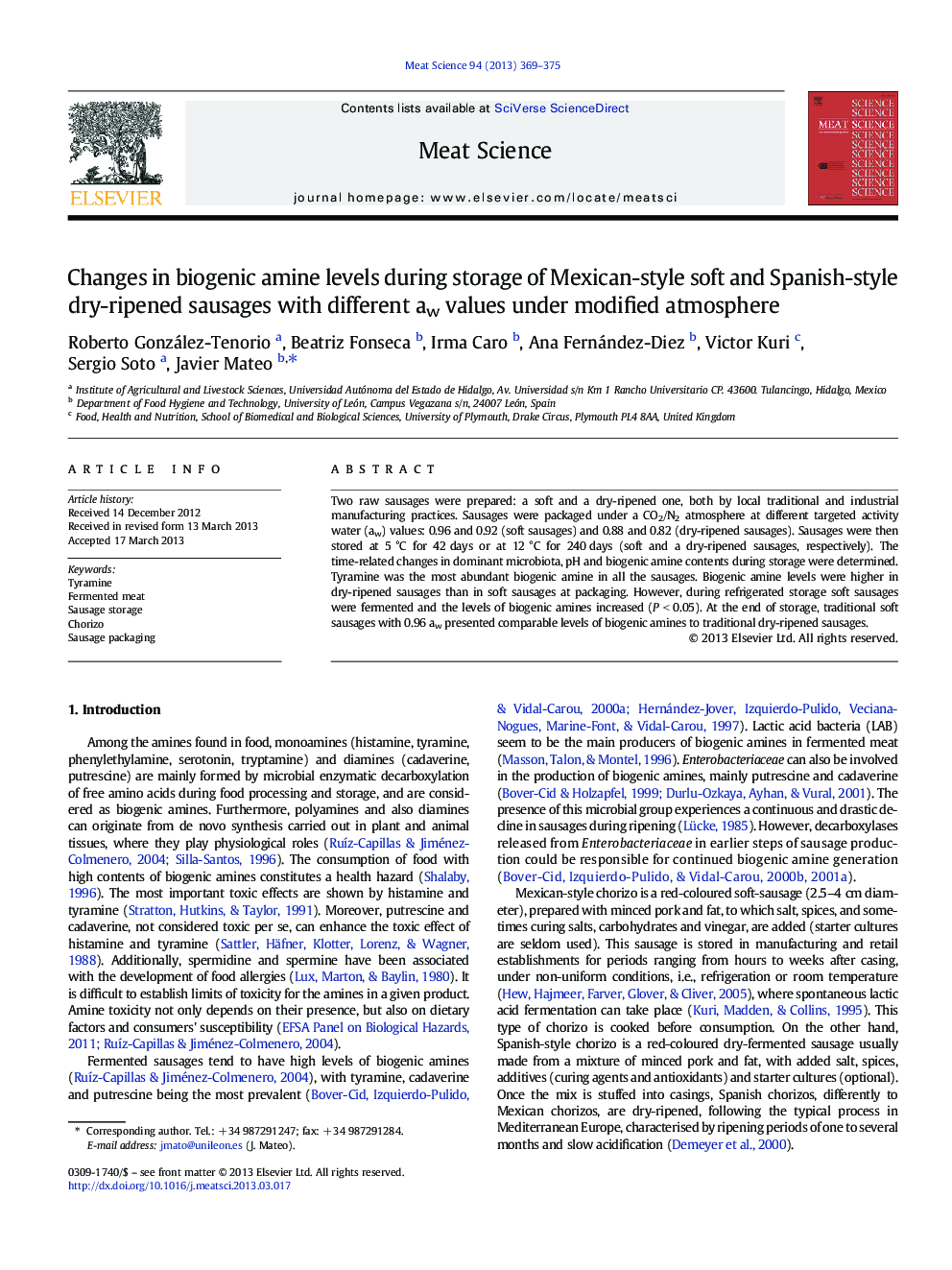| Article ID | Journal | Published Year | Pages | File Type |
|---|---|---|---|---|
| 2450066 | Meat Science | 2013 | 7 Pages |
•We evaluate the biogenic amine content in soft and dry raw sausages during storage•Refrigerated storage of soft sausages resulted in fermentation and amine accumulation•Stored soft sausages came to have comparable amine levels than dry-ripened sausages•Biogenic amine levels in stored sausages depended on formulation and water activity
Two raw sausages were prepared: a soft and a dry-ripened one, both by local traditional and industrial manufacturing practices. Sausages were packaged under a CO2/N2 atmosphere at different targeted activity water (aw) values: 0.96 and 0.92 (soft sausages) and 0.88 and 0.82 (dry-ripened sausages). Sausages were then stored at 5 °C for 42 days or at 12 °C for 240 days (soft and a dry-ripened sausages, respectively). The time-related changes in dominant microbiota, pH and biogenic amine contents during storage were determined. Tyramine was the most abundant biogenic amine in all the sausages. Biogenic amine levels were higher in dry-ripened sausages than in soft sausages at packaging. However, during refrigerated storage soft sausages were fermented and the levels of biogenic amines increased (P < 0.05). At the end of storage, traditional soft sausages with 0.96 aw presented comparable levels of biogenic amines to traditional dry-ripened sausages.
